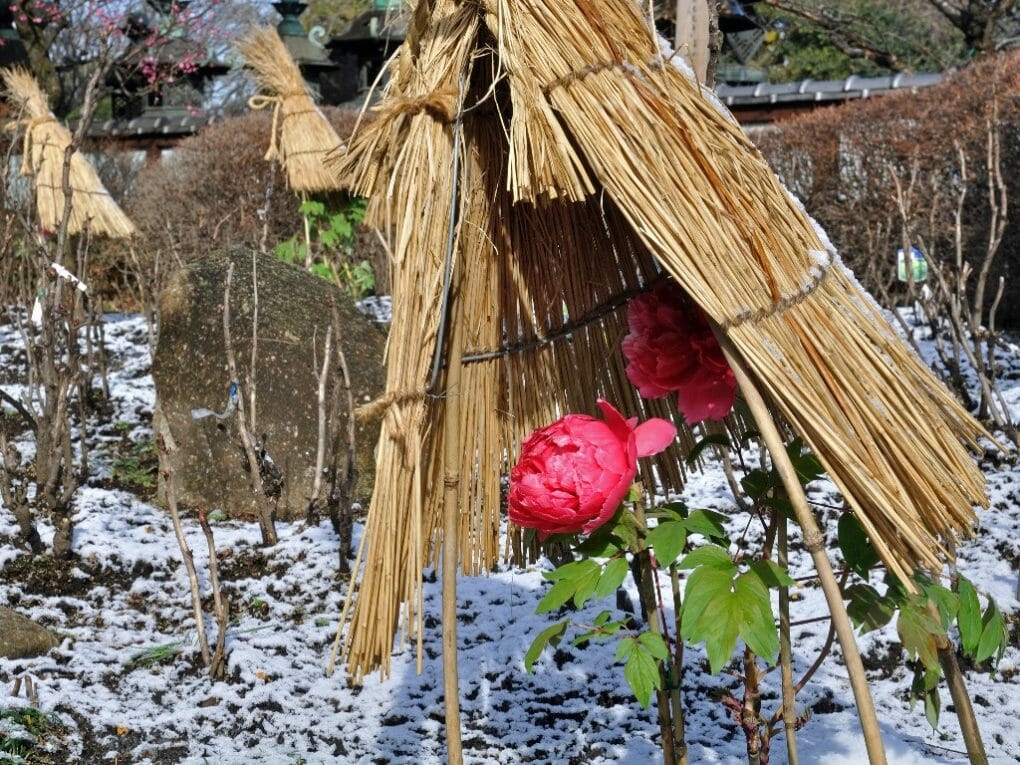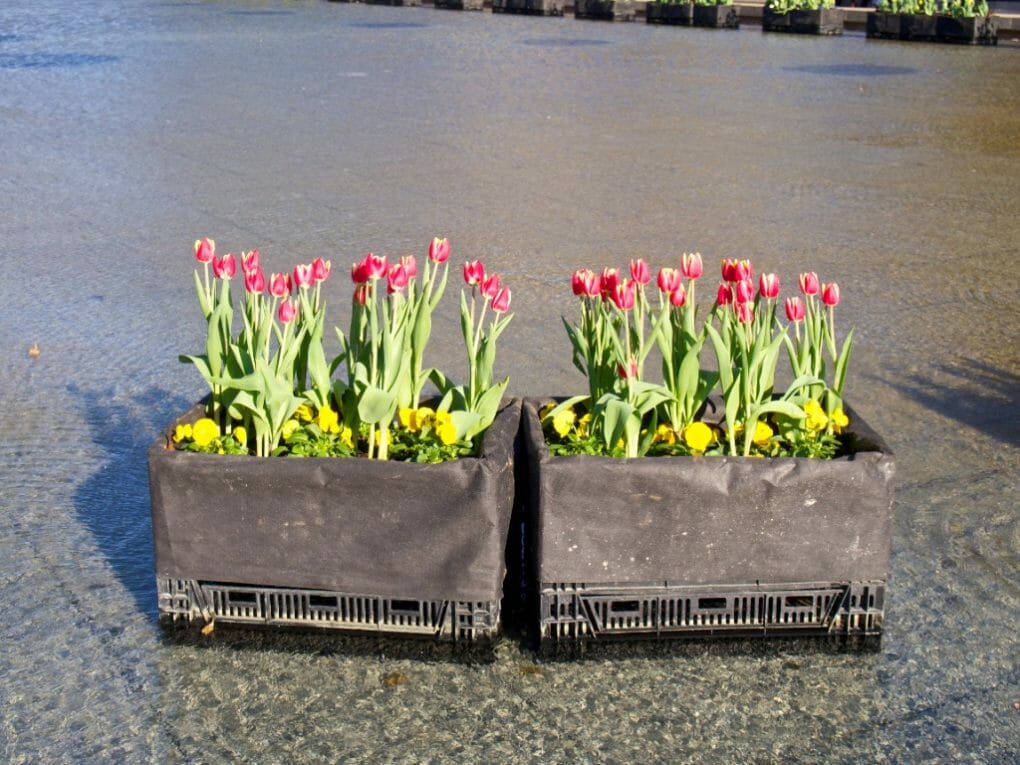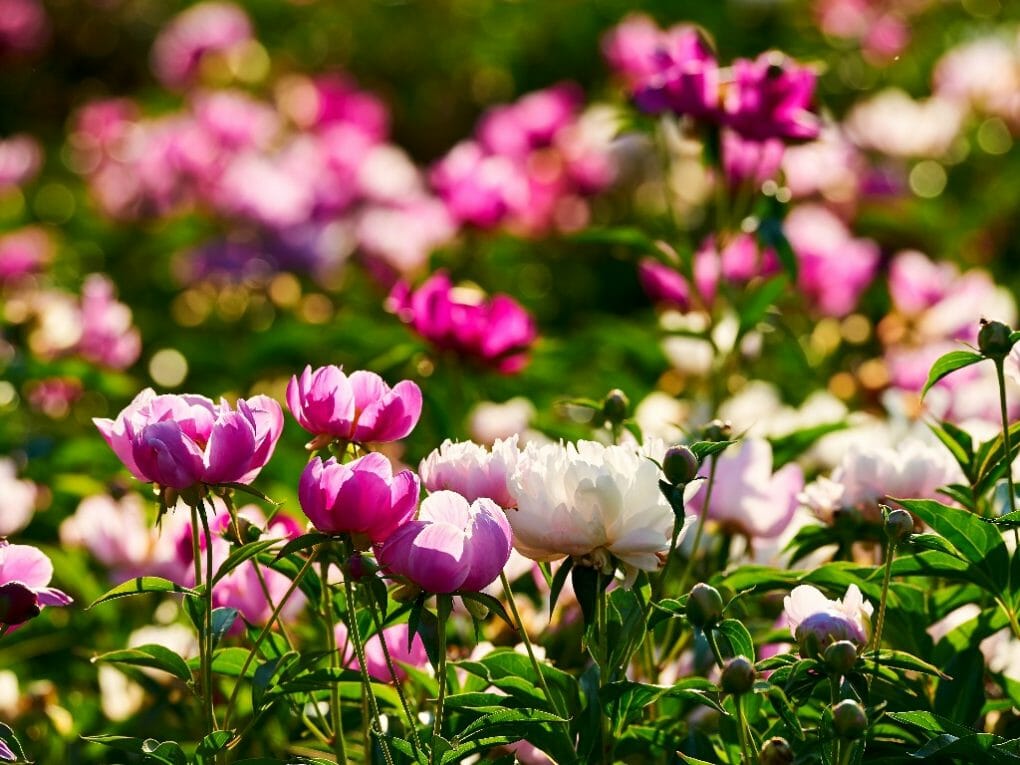Can Peony Survive Winter? Peony Winter Care Instructions

You shouldn’t be too concerned about the well-being of your beloved peonies because these lovely plants are very resistant to the cold. They can tolerate temperatures below zero and winters in areas as far north as zone 3 of the USDA plant hardiness scale. Because these hardy plants require approximately six weeks of temperatures below 40°F(4°C) to produce flowers the next year, it is ill-advised to provide a great deal of winter protection for peonies. Continue reading for additional details regarding the cold resistance of peonies.
Table of Contents
Peony Winter Care Instructions
Peonies Need to Be Exposed to Cold
The interesting thing about the lovely Paeonia is this: if you live in Zones 7 or 8, you’ll need to pay more attention to winter care for the plant than if you reside in Zones 3 or 4.
Most cultivars need between 500 and 1,000 hours of chilling time, equivalent to around 20 to 42 days spent in temperatures ranging from 32 to 40°F.
Because the accumulation of chill hours encourages bud development, your plants require approximately one month of cold winter weather to produce spring flowers.
If you live in Zone 3-5, you can expect temperatures below freezing for at least a month of the year and possibly even for as many as six months.
Peonies don’t mind the additional time spent below freezing that comes with long, harsh winters, but if you live in Zones 6-8, it may be difficult to get a full month of almost-zero weather. Peonies prefer long, cold winters.
However, unlike spring-flowering bulbs, peonies do not benefit from being dug up and forced indoors in the winter. Instead, letting them grow naturally in their natural environment is best.
Be Careful With the Depth At Which You Plant

Peonies are herbaceous perennials from tuberous roots with “eyes” that produce new branches.
A Paeonia must be planted at the appropriate depth to reach its full potential. In Zones 3-5, plant the tuber so the pink eyes, the leaf stalks’ origin, are two inches below the soil’s surface. This is the optimal planting depth.
Can you make out the tiny pink bud in the picture that follows? That is what the plant refers to as its “eye.”
You should plant it at a depth of precisely two inches. Therefore, get out your ruler to ensure the eyes are planted at the appropriate depth.
Those who live in Zones 6 and 7 should plant the eyeballs no deeper than one inch below the soil’s surface. And within Zone 8, only a quarter of an inch lower.
When planted at this right depth, it will have the best chance to flourish and produce many lovely, heavy blooms.
The difference in planting depths is because peonies in warm areas will be subjected to lower air temperatures. In contrast, peonies in cold areas will be kept just two inches down for some protection during the winter when temperatures can get as low as -40°F.
Determining Where, When, and How to Make the Cuts
The variety of peonies you are working with will determine whether or not you should prune your plants so that they are at ground level.
After the growing season, however, you must let all of the leaves fall off naturally, regardless of the sort of plant you have.
It is time to clip herbaceous cultivars’ stems to a level approximately an inch above the soil level once they have turned a good golden or brown color. This often occurs after the first frost in your region, so keep this in mind.
Instead of placing clipped plants on a compost pile, throw them away in the trash can. This prevents any illnesses which may have been left behind on the leaves from re-infecting your plants the following spring and causing more damage.
In the autumn, you don’t need to take any additional precautions with different kinds of trees. However, if you want to keep their shape in the spring, you can choose to perform some mild pruning on them.
Also, when pruning intersectional cultivars, leave at least one or two growth nodules on each branch.
However, if you live in a cooler climate, you might want to prune your intersectional peonies to a height of about an inch over the ground, just like you would with herbaceous kinds, because the buds might not make it through the winter if they are above ground. No matter what, the spring will see the growth of new stalks.
Use a plant marker to point out the location of your prized peony throughout the winter months so that you do not inadvertently step on it.
Mulching
Intelligent mulching practices may sometimes consist of not mulching at all. It seems to reason that adding even just one inch of mulch on top of the soil could affect a peony plant’s ability to flourish and produce flowers. Planting depth is essential to the peony’s overall health.
Peonies that have just been planted in Zones 3-5 would be best served by having an extra-thin layer of breathable mulch, such as straw, spread over them. This would assist the peonies in remaining warm during the winter and offer additional defense against the elements.
However, even if you use a straw, you still don’t want to position it so that it’s too close to the stem of the tree kinds you’re working with. It is possible to trap undesired moisture in the soil around the tuberous root of a plant by placing mulch right up against the plant’s stems. This might cause the plant to decay or get diseases it normally would not be susceptible to.
Those living in Zones 6-8 should not mulch their gardens. You plant the eyes just an inch or half an inch below the earth to maximize cold air exposure.They don’t want any warmth, but mulch would give it to them nonetheless.
Determine the Right Varieties

There are three distinct peony species, but they are all long-lived perennials. Peonies require special attention throughout the winter months:
- Herbaceous Peonies-Herbaceous variants are perennial shrubs that die back at the end of the blooming season and require a time of dormancy and cold before blooming the following spring again. Herbaceous varieties can be distinguished from other types of roses by their lack of thorns.
- Tree Peonies-Tree kinds are deciduous shrubs, meaning they shed all of their leaves in the fall and stay bare-branched throughout the winter. Tree varieties can grow up to six feet tall.
- Itoh or Intersectional Peonies-Peonies of the intersectional kind, also known as Itoh peonies, results from a hybrid cross between herbaceous and tree types. They are distinguished by their enormous flowers, which often bloom for up to three weeks, which is longer than the bloom time of herbaceous or tree types.
Although these lovely perennials fare best in cooler temperatures, gardeners in Zones 7 and 8 and even sections of Zone 9 can increase their chances of success by selecting cultivars that are better adapted to the warmer conditions of their respective zones.
Keep an eye out for cultivars that boast early flowering times and either single or semi-double flower arrangements.
These varieties have a greater chance of success in warmer climates. Growing the ‘Green Lotus cultivar will reward you with an appealing plant that blooms early and has a solitary blossom.
It is certain to attract the attention of your neighbors, and each time you see it, you will be captivated by the way its light green petals are tinged in pink.
The exquisite Itoh hybrid known as ‘Julia Rose’ is another one of my absolute favorite early bloomers. To maximize cold air exposure, plant the eyes an inch or half an inch underground.
